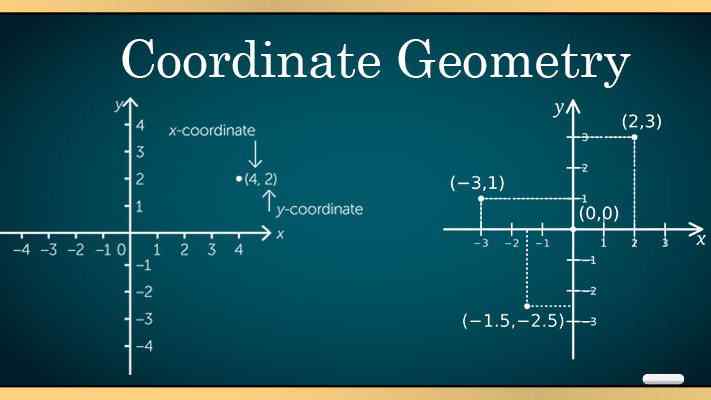Maths is one of those subjects which is evolving on a daily basis. It is a subject which is used in everyday life. Maths is the subject which is taught to children from their early childhood days till their teenage years and even in under-graduate courses too. It is one of those subjects which consists of never-ending research. The subject demands more from humans because its research is never-ending. Basic mathematics is used in the everyday life of the person. Many branches of mathematics are taught to different people in different fields. One such branch which is taught to students is Coordinate geometry. It is one of the most ancient and widely used branches of mathematics. It is a study related to ellipse, hyperbola, and many other curves.
Coordinate geometry is one of the most important branches of mathematics. It’s one of those branches where the coordinate system is everything. It is most commonly used in engineering, rocketry, and even space research.
It is necessary to handle the shape’s results in the Cartesian plane.
Coordinate geometry and engineering are two sides of the same coin. They are incomplete without each other. For building any building or any device, the use of the basics of coordinate geometry is a must. Various shapes are based on the coordinate system of mathematics. Some of them are:
- Ellipse
- Parabola
- Hyperbola
This article discusses coordinate geometry and the different curves of this geometry
- First of all, let’s discuss the first curve that is an ellipse.
A planar curve that surrounds two focus points and has a constant sum of the two distances to the focal points at all places along the curve is called an ellipse. As a result, it generalizes the circle, which may be a sort of ellipse with an equivalent two focal points as an ellipse. An ellipse, which is a plane curve tracing the intersection of a cone and a plane, is a closed type of conic section. Ellipses could have resembled the other two types of conic sections, parabolas, and hyperbolas, in appearance, but they are both open and unbounded. The angled cross-section of a cylinder is additionally an ellipse.
A single focal point and a line drawn outside of it can also constitute an ellipse. One of the best examples of the ellipse is the revolving orbit of the Earth.
- The second curve which we are going to discuss is a parabola.
In mathematics, a parabola is a mirror-symmetrical, roughly U-shaped planar curve. It fits a variety of mathematical descriptions that appear to define the same curves on the surface.
When a right circular conical surface meets a plane parallel to another plane that is tangential to the conical surface, a parabola, also known as a conic section, is created.
If a parabola behaves like a light-reflecting material, light traveling parallel to the axis of symmetry and striking its concave side is reflected in the focus, regardless of where the reflection occurs on the parabola.
The parabola’s standard and generalized equations are both y^2=4ax.
The axis of the parabola is the transverse axis, which is also known as the x-axis.
- The third curve which we are going to discuss is the hyperbola.
A two-branched open curve created by intersecting a plane with both halves of a double cone is known as a hyperbola.
The plane doesn’t need to be parallel to the axis of the cone; the hyperbola will still be symmetrical. One more type of hyperbola is rectangular hyperbola. Its equation is xy=c^2.
Sundials employ the usage of hyperbolic curves.
The distance between the two foci in ellipse is the same as the distance between the two foci in hyperbola.
These were some descriptions of the basic curves which we study in coordinate geometry. If one has to learn more about these curves or wants to clear mathematical doubts then one can visit the cuemath website to clear all your doubts. This website not only helps in clearing one’s doubt but also helps in brushing up the weak concepts.

















